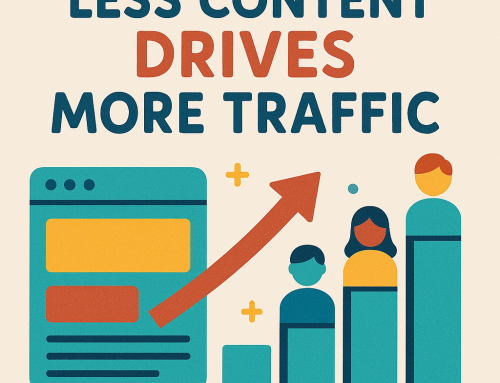Have you ever thought of indexing your website on Google faster? If you have, then you should know how to do it. Every SEO professional wants Google to crawl and index the site fast.
Indexing your website is important because it helps in the success of your SEO strategy and include that your website pages will appear on the search result on Google. A quicker indexing procedure guarantees that readers will see your material more quickly, boosting the possibility of engagement and bringing more prospective consumers to your website.
But before you understand how you can index the website faster; it is important to know what indexing is and then how it helps in indexing the website faster on Google. So, let’s begin.
What is Google’s Index?
All the online pages that Google has crawled and is aware of are listed in its index. It won’t show up in search results if Google doesn’t index your website.
Nobody would be able to find your website, which would be bad for business. Hopefully, you now understand the significance of indexing for Google ranking.When users input queries into the search field, Google can swiftly gather and display pertinent search results because of this digital library of data on websites and their pages.
Ways to Improve Google’s Indexing of Your Website
For your content to be seen by more people and to increase traffic to your website, it is crucial that Google indexes your website rapidly.
1. Check Settings for Search Engine Visibility
The first thing you should consider is to make sure that search engines can see your WordPress site is the first step. By visiting the settings and then clicking on the Reading page and scrolling down to the Search Engine Visibility option, you can quickly verify this.
To allow search engines to index and crawl your website, make sure the checkmark is removed from this option.
2. Submit Website to Search Console on Google
All website owners can use Google Search Console, formerly known as “Google Webmaster Tools,” for free. To ensure that the proper people are seeing your website, it demonstrates how Google indexes and includes your website in Google search results.
Using the best SEO plugin for WordPress, you can effortlessly submit your website to Google Search Console and see if your web pages are indexed.
3. Remove Nofollow Link
Googlebot notifies Google to remove nofollow links from its index when it encounters them. Therefore, you must ensure that nofollow internal links are removed.
Simply search for and delete the rel=”nofollow” link tag. You can either accomplish this directly from the HTML code or by using the block editor in WordPress.
4. Build High-quality Backlinks
Search engines can tell that your material is useful and deserving of being indexed when you receive high-quality backlinks from trusted websites. To hasten the indexing procedure, use ethical link-building techniques like guest posting and working with influencers.
5. Social Media Promotion
To make your content more visible, share it on social media sites. Search engines may take notice of and index your material more quickly as a result of social signals. To increase the reach of your content, encourage users to share and interact with it.
6. Regularly Update Content
Search engines favor recent, fresh content. To maintain your existing information current and educational, regularly update and add to it. Request re-indexing using Google Search Console if you make significant updates.
7. Create an XML Sitemap
A sitemap makes it simple for search engines to navigate your website’s information. It provides them with a comprehensive inventory of your material in a machine-readable format.
Additionally, it lets search engines know how frequently you update your website and which links on your website are more crucial than others.
When you first start a blog or develop a new website, sitemaps are quite helpful because the majority of new websites don’t yet have many internal links or backlinks. Therefore, by generating an XML sitemap, you can ensure that all of your key articles and pages, including new content, are indexed by search engines.
The next step is to walk you through creating an XML sitemap using the AIOSEO WordPress plugin, which is the simplest method. The best part is that it alerts search engines immediately whenever you add, edit, or remove information from your website.
8. Submit Sitemap to Google Search Consoles
The next thing that you need to do is submit the XML Site map to the Google Search Console, you need to simply log in to Google Search Console.
Now, you can go to the sitemaps which are on the screen’s left side, and add the last part of the sitemap URL which is under the section Add new sitemap and click on the Submit button. You will start receiving reports in the search console once Google has crawled and indexed your website.
9. Optimize Your Robots.txt File
Since it serves as a website map for robots that crawl websites for search engines, a robots.txt file is an effective SEO strategy. Your robots.txt must grant Google permission to crawl the website, as you would have predicted.
However, as wp-admin pages are neither beneficial to your visitors nor necessary for Google to crawl, it is typical to forbid them. Search engine rankings can be improved and page speed can be increased by instructing Google not to crawl unused sites.
However, when it comes to indexing, you must ensure that your pages are crawlable and that no significant URLs have been blocked. Instead, you can instruct Google bots to give specific URLs priority when crawling them.
10 . Create Internal Links on the Website
Internal linking is one of the most efficient techniques to promote crawling and improve website indexation. Links help to build the crawling spiders’ routes through the web. The spider follows a link from one page to another when there is one.
Therefore, concentrate on building links to and from all of your most crucial pages. This notifies Google about your fresh and significant material, as well as the visitors to your website. You can utilize AIOSEO’s robust Link Assistant tool to make internal linking simple.
Click on the Links Report under Link Assistant in the All-in-One SEO menu. This report can help you find new opportunities for connecting as well as orphan posts—posts without any internal links at all.
There’s no need to manually modify every single post. Without leaving the page, you can quickly create both outgoing and inbound internal links using the Link Assistant.
Conclusion
The rate at which Google indexes your website can be considerably increased by implementing these tactics. Because it takes time for search engine algorithms to evaluate and rank fresh material, patience is essential. You may effectively increase your website’s exposure and online presence by constantly producing worthwhile, optimized content and making use of these strategies.
By Jenny Amaya






